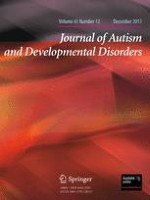01-12-2011 | Original paper
A Comparison of Autism Prevalence Trends in Denmark and Western Australia
Gepubliceerd in: Journal of Autism and Developmental Disorders | Uitgave 12/2011
Log in om toegang te krijgenAbstract
Prevalence statistics for autism spectrum disorders (ASD) vary widely across geographical boundaries. Some variation can be explained by diagnostic methods, case ascertainment and age at diagnosis. This study compared prevalence statistics for two distinct geographical regions, Denmark and Western Australia, both of which have had population-based registers and consistent classification systems operating over the past decade. Overall ASD prevalence rates were higher in Denmark (68.5 per 10,000 children) compared with Western Australia (51.0 per 10,000 children), while the diagnosis of childhood autism was more prevalent in Western Australia (39.3 per 10,000 children) compared with Denmark (21.8 per 10,000 children). These differences are probably caused by local phenomena affecting case ascertainment but influence from biological or geographical factors may exist.
